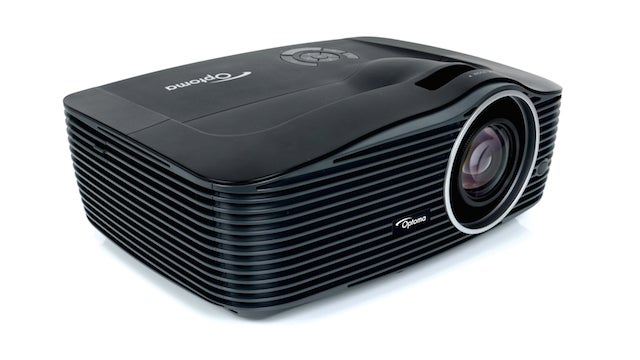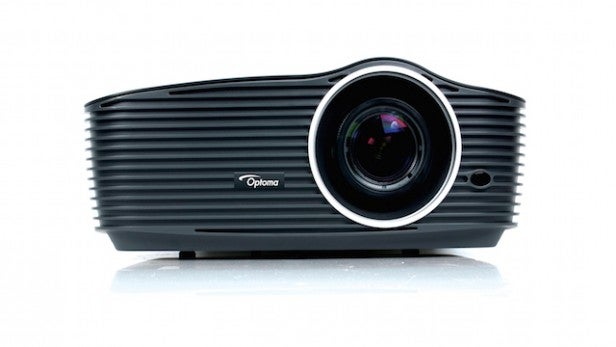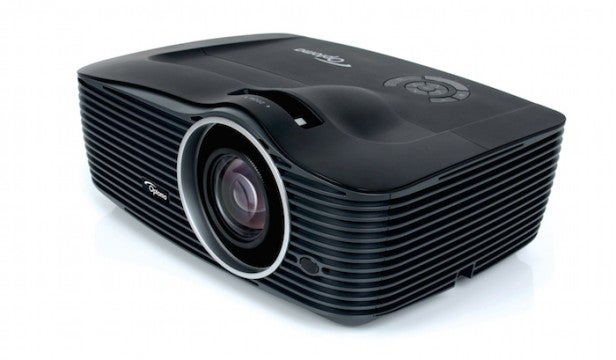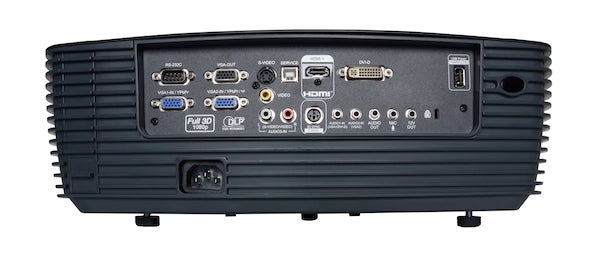Optoma HD36 Review
Optoma HD36
An impressively flexible home entertainment projector for surprisingly little money

Sections
- Page 1 Optoma HD36 Review
- Page 2 Picture Quality Review
- Page 3 3D, Sound and Verdict Review
Verdict
Pros
- Really good 2D and 3D picture quality
- Good value
- Adaptable to dark or bright room situations
Cons
- Colours occasionally look slightly unnatural out of the box
- Slight squeak from the colour wheel
- Built-in speaker is a let down
Key Specifications
- Review Price: £799.00
- Full HD DLP projector
- 3D support
- 3000 Lumens Brightness
- 30000:1 contrast ratio
- Optional wireless HDMI system
What is the Optoma HD36?
The HD36 is a Full HD home cinema projector that uses single-chip DLP technology. Available for under £750 from some online retailers, the HD36’s main attractions – aside from its unusual affordability for a dedicated home entertainment projector – are its extremely high claimed maximum brightness of 3000 ANSI Lumens, promising claimed contrast ratio of 30,000:1, and a built-in speaker system that apparently pumps out 30W.
SEE ALSO: Best Projectors Round-up
Optoma HD36 – Design and Features
The HD36 pulls off the impressive trick of managing to look simultaneously serious and fun. It’s surprisingly beefy for such an affordable machine, possessing both more height and more depth than we’d typically expect – all promising signs of quality innards, efficient venting systems and, potentially, plenty of shielding to suppress running noise.
Also hitting the right note is the large size of the lens located to right of centre on the front edge. The circular housing for this actually stretches beyond the upper edge of the projector, creating a cute bulge in the projector’s top that runs back for the whole length of the lens barrel.
The projector’s black bodywork is nicely finished too, and both the top-panel buttons and optical zoom slider are large and easy to access. The only fiddly part of the design is the focus ring around the lens, which requires you to fit your fingers inside the cowling around the lens.
Connections are adequate, if a little odd. The odd bit comes from the way that instead of giving you two HDMIs as we’d normally expect, the HD36 gives you one HDMI and one DVI. This isn’t a deal breaker, but it could mean that someone looking to install the HD36 permanently rather than just getting it out when they want to use it will need an HDMI adaptor for potential second sources.
Other key sockets include two VGA inputs with component video support, an S-Video input (remember those?!), a composite video input, a handy 12V trigger port, two USB ports – one for updating firmware, the other for powering USB devices and an unexpected variety of audio jacks including a mic socket!
It’s unusual for a projector to cater so much for audio, but then the Optoma HD36’s claimed 30W of built-in audio power is itself extremely unusual for a projector. We have a long-standing objection to speakers in projectors, built around the twin facts that a) any sounds they produce will inevitably appear far removed from the pictures they’re supposed to be accompanying, and b) the speakers themselves tend to be garbage. But maybe the HD36’s 30W will help it break the mould.
Its claimed maximum brightness of 3000 ANSI Lumens is extremely high, but more importantly this is joined by an also impressively high claimed contrast ratio of 30,000:1. It should be noted, though, that this 30,000:1 contrast claim is based on using the projector’s Dynamic Black system; its native contrast is rated at a much more modest 2000:1.
The Optoma HD36 is capable of playing 3D (something DLP projectors tend to do well), though only if you splurge around £80 more on a separate ZF2300 3D Starter Kit that gives you one pair of glasses and a small 3D transmitter. 
There’s one other potentially useful optional accessory: the £200 WHD200 Wireless HDMI system. This lets you ‘beam’ full HD video from your sources to the projector without the need for the sort of long cable runs often associated with projector installations.
Optoma HD36 – Setup
The HD36 is impressively straightforward to get up and running. For starters it offers a very respectable 1.5x amount of optical zoom, and its manual zoom and focus ring adjustments run smoothly and offer a decent amount of finesse. Even better, it offers optical vertical image shifting via an adjustor housed under a flap on the projector’s top side. This is limited in the extent of movement it allows, but finding any optical vertical image shift at all on a sub-£800 projector is a great result, meaning you may well not have to use image distorting keystone correction to get the edges of your picture straight.
Where picture calibration is concerned the Optoma HD36 again has plenty going on, including a noise reduction system, the Texas Instruments Brilliant Colour system for boosting colour saturations, and even a pretty fulsome colour management suite offering control over the hue, saturation and gain adjustments for the red, green, blue, cyan, magenta and yellow colour components.
The HD36 is more forgiving of set up than most Optoma projectors we’ve seen in recent times, but there are still a few recommendations we’d make. Firstly, if you’re wanting to indulge in serious film viewing in a dark room set the Brightness level to one or, possibly, zero (don’t worry; this won’t result in total darkness as the brightness ‘slider’ goes into negative figures!). Contrast, too, achieves the best balance when set to around its one level, while the sharpness setting should be set between seven and ten to stop pictures becoming fizzy – especially if you’re watching a grainy source. Colour temperature we set to ’Warm’ while we preferred level 13 for colour saturation.
Noise reduction we left off for HD viewing (even though Optoma’s system is actually impressively subtle), Dynamic Black we left on as it delivers more punch without leading to serious light instability, Gamma we set to 2.2 for movies (though it’s a pity there’s not also a 2.4 preset), and finally we set the BrilliantColor feature to seven. This is higher than we’d normally go with BrilliantColor, as it traditionally causes noise, but the HD36’s image handling is good enough to support such a high setting without unpleasant side effects.
One final adjustment to regularly revisit is the lamp output. This is definitely best set to Eco for dark room movie viewing, but should always be kicked up to its Bright mode if there’s ambient light around.

